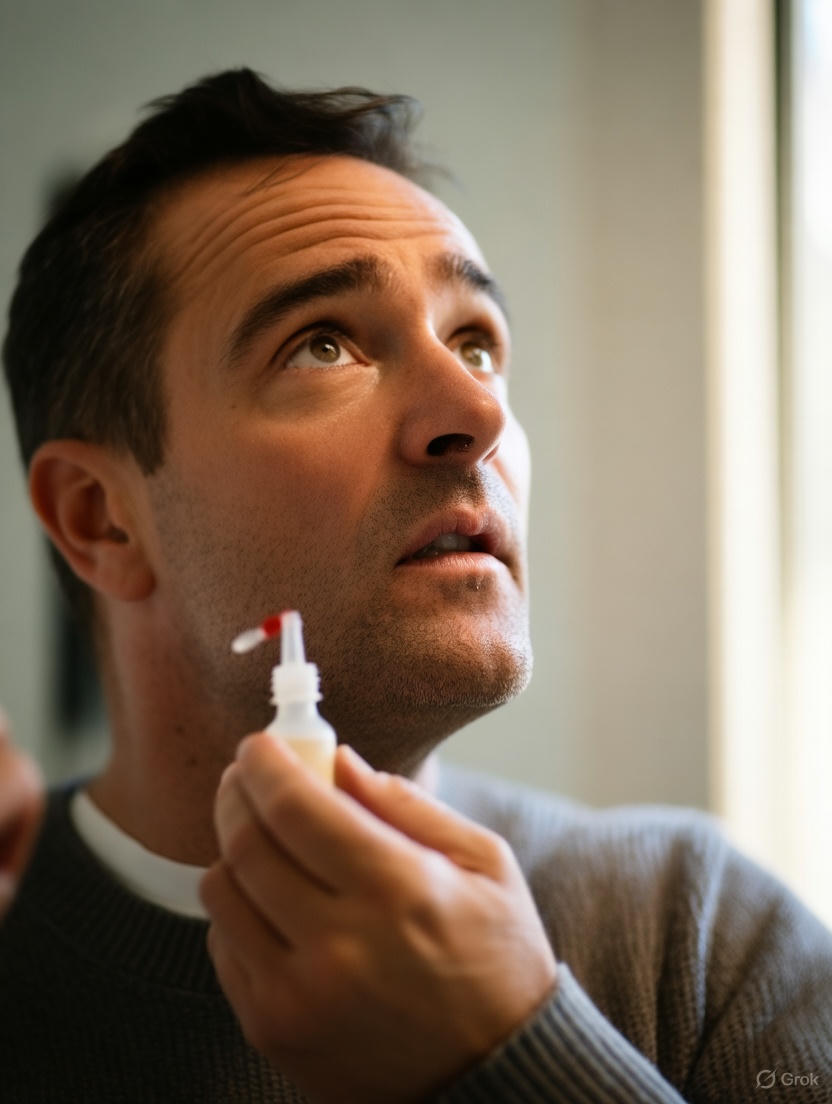Pilocarpine Eye Drops: A New Option for Presbyopia
Presbyopia, or age-related difficulty with near vision, usually begins to affect people after the age of 40. Recently, the U.S. FDA approved pilocarpine eye drops as the first medication designed to help with this common condition. For many patients, this raises questions such as:
- What exactly are pilocarpine eye drops?
- How do they improve near vision?
- How long does the effect last?
- Are there benefits and possible side effects?
- Is it suitable for everyone?
What Are Pilocarpine Drops?
Pilocarpine is a well-known compound that has been used for decades in the treatment of glaucoma. In a lower-dose formulation, it has now been adapted for presbyopia, offering patients a non-surgical alternative to reading glasses.
How Do They Work?
The drops gently shrink the pupil (miosis), which increases the depth of focus. This allows the eye to bring close objects—like a phone screen or book—into sharper focus. The improvement is temporary, lasting on average 4 to 8 hours, depending on the individual.
Key Advantages
- A simple non-invasive option—no surgery required.
- Provides clearer near vision when it is most needed (reading, using a smartphone, working on a computer).
- Easy to use and takes effect quickly.
Possible Side Effects
As with any medication, some patients may experience:
- Mild headache or a feeling of pressure around the eyes,
- Reduced night vision or more difficulty in dim lighting,
- Temporary eye redness, burning, or watering,
- Rarely, short-lasting blurred vision.
For this reason, patients who drive at night should use the drops with caution.
Effectiveness and Limitations
Clinical studies show that pilocarpine drops can significantly improve near vision for many people. However, the effect is not permanent—it reduces symptoms but does not reverse presbyopia.
Who Might Benefit?
- Adults over 40 with age-related near vision difficulties,
- Patients without advanced cataracts or other eye disease,
- Individuals who want a part-time solution to reduce reliance on reading glasses.
The suitability of pilocarpine eye drops should always be confirmed by an eye examination.
Frequently Asked Questions (FAQ)
1. Do pilocarpine drops cure presbyopia?
No. They provide temporary improvement, usually for a few hours, but do not eliminate presbyopia permanently.
2. How long does the effect last?
On average 4 to 8 hours, depending on the patient and the dosage.
3. Do they affect distance vision?
Generally no. Distance vision remains clear, but because the pupil becomes smaller, vision in low-light or nighttime conditions may be reduced.
4. Should I use them in both eyes?
Yes, they are typically applied to both eyes, unless otherwise instructed by your doctor.
5. How are these different from glaucoma drops?
The concentration for presbyopia is lower than that used in glaucoma. This helps to minimize side effects while maintaining effectiveness for near vision.
Conclusion
Pilocarpine drops represent an innovative medical approach for people who want sharper near vision without relying on reading glasses. While not a permanent fix, they provide a convenient daytime solution and mark an important step forward in presbyopia management.



